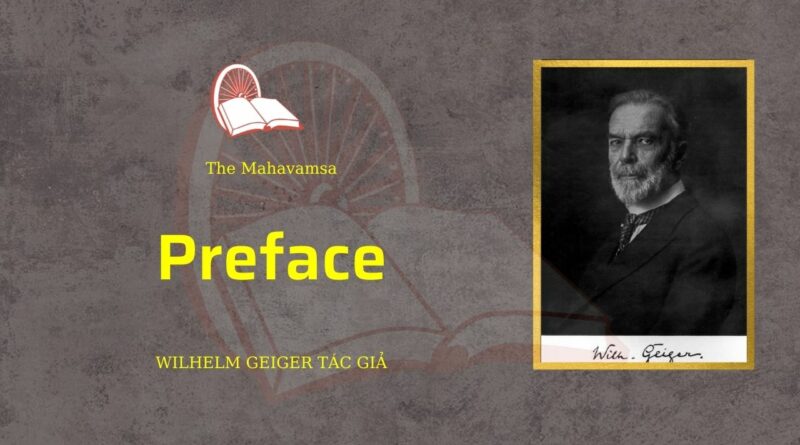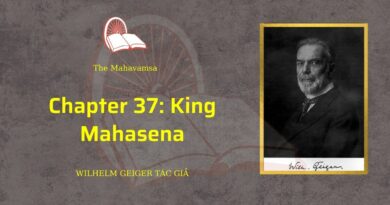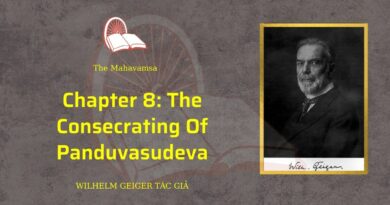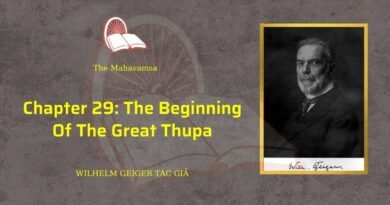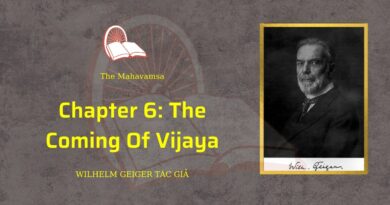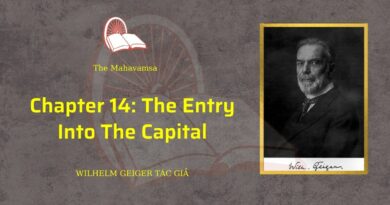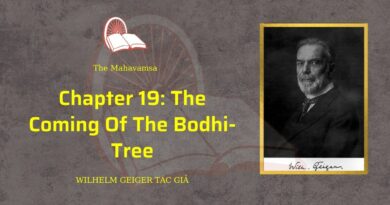THE MAHAVAMSA
The Great Chronicle of Lanka from 6th Century BC to 4th Century AD
Translated from Pali by Wilhelm Geiger
EDITOR’S NOTE ON THIS ONLINE VERSION
The resplendant and beautiful isle we know as Sri Lanka has a long historical recorded. This rich and vibrant history is faithfully recored in the chronicle we have come to know as the Mahavamsa. The Mahavamsa or otherwise known as the “Great Chronicle” is the single most important work of Lankan origin. It describes the life and times of the people who forged our nation, from the coming of Vijaya in 543 BC to the final takeover by the British in 1815. The Mahavamsa itself is actually comprised of three parts, all written at different times in Lankan history.
The first part was written in the 6th century AD by King Dhatusena’s brother, the venerable thera Mahanama. His work was greatly influenced by the Dipavamsa written five centuries earlier. It describes the foundation of the Lankan monarchy with the consecration of King Vijaya and continues to the end of King Mahasena’s rule in the 4th century AD. The second part of the Mahavamsa, more commonly known as the Culavamsa was written in the 13th century AD. This chronicles the time between the arrival of the Tooth Relic in the 4th century AD and the end of the reign of King Parakramabahu the Great. Credit for this part is given to the thero Dhammakitti, but many historians believed that it was authored by many monks. The third and final part was written over many years, concluding in the year 1815, when the British occupied the whole of Lanka by military force.
The official translation of the Mahavamsa from Pali was completed by Wilhelm Geiger in 1912 and subsequently the Culavamsa in 1930. The first English translation of the Mahavamsa from Mr. Geiger’s native German was done by Mrs. Mabel Haynes Bode. Overall, the Chronicle has over 200,000 words of text in about 960 printed pages. It is as I mentioned earlier divided into three parts. Mr.Geiger called the first part (Chapters 1-37) the Mahavamsa, the second part (Chapters 38-79) the Culavamsa I, and the third and final part (Chapters 80-101) the Culavamsa II.
I felt it imperative that this national treasure be put on the Web, so beginning in July of 2002, I began scanning the text of the Mahavamsa. Using OCR (optical character recognition) technology, I translated the text onto my computer and then began the long task of hand editing any mistakes. The whole process of scanning, editing, and writing the HTML for the first 37 chapters took me a total of three weeks.
What you will see on this website is only the first 37 chapters of the Mahavamsa as written by the Thera Mahanama. I hope to OCR and put online the complete Culavamsa as and when time permits over the next two years left for me in high school.
To further aid your reading of the Mahavamsa, I have included many supplements including: a geneology of kings, an index of battles and wars mentioned in the Mahavamsa, a list of sovereigns from Vijaya to Mahasena with corresponding links, and a list of Pali words that occur in the text. The end notes however are not included in this website. If you find yourself lost, please consult the actual book or email me.
I hope you enjoy exploring the Mahavamsa in this E-book I have made available on the World Wide Web at the Lakdiva site. For more information on Lankan history, please visit the other E-book, “A Short History of Lanka” written by H. W. Codrington I put on line in 2000.
Please E-mail me any comments and suggestions you may have regarding this web site.
PREFACE
A few words are necessary to explain how the present work came to be written; and one or two points should be mentioned regarding the aims it is hoped to achieve. Early in 1908 the Government of Ceylon was contemplating a new and revised edition of Turner’s translation of the Mahavamsa, published in 1837 and reprinted in L. C. Wijesinha’s Mahavamsa published in 1889, and were in correspondence on the subject with the Ceylon Branch of the Royal Asiatic Society. The Society appointed a numerous and influential Committee, and recommended myself as Editor for Europe.’ By their letter of July 18, 1908, the Government of Ceylon requested me to undertake that post. I took the opportunity at the Congress of Orientalists held at Copenhagen in August, and again at the Congress on the History of Religions held in September at Oxford, to consult my colleagues on the best plan for carrying out the proposed revision. They agreed that the method most likely to lead to a satisfactory result within a reasonable time was to entrust the work to one competent critical scholar who could, if necessary, consult members of the Ceylon Committee, but who should be himself responsible for all the details of the work. I reported to Government accordingly, and recommended that Prof. Geiger, who had just completed his edition of the text, should be asked to undertake the task. The Government approved the plan, and asked me to make the necessary arrangements. Those arrangements have resulted in the publication of the present volume.
Professor Geiger has made a translation into German of his own revised critical edition published by the Pali Text Society in 1908; and added the necessary introduction, appendices, and notes. Mrs. Bode has translated the German into English; and Professor Geiger has then revised the English translation.
The plan has been to produce a literal translation, as nearly as possible an absolutely correct reproduction of the statements recorded in the Chronicle. It is true there is considerable literary merit in the original poem, and that it may be possible hereafter to attempt a reproduction also, in English unrhymed verse, of the literary spirit of the poem. But a literal version would still be indispensable for historical purposes. For similar reasons it has been decided to retain in the translation certain technical terms used in the Buddhist Order. In a translation aiming at literary merit some English word more or less analogous in meaning might be used, regardless of the fact that such a word would involve implications not found in the original. Thus bhikkku has often been rendered ‘priest’ or ‘monk’. But a bhikkku claims no such priestly powers as is implied by the former term, and would yield no such obedience as is implied in the other; and to discuss all the similarities and differences between these three ideas would require a small treatise. There are other technical terms of the same kind. It is sufficient here to explain that when such terms are left, in the present translation, untranslated, it is because an accurate translation is not considered possible. Most of them are, like bkikkhu, already intelligible to those who are likely to use this version. But they are shortly explained in footnotes; and a list of them, with further interpretation, will be found at the end of the volume.
The Ceylon Government has defrayed the expense of this, as it did of the previously published translations of the Mahavamsa.
T.W. RHYS DAVIDS

